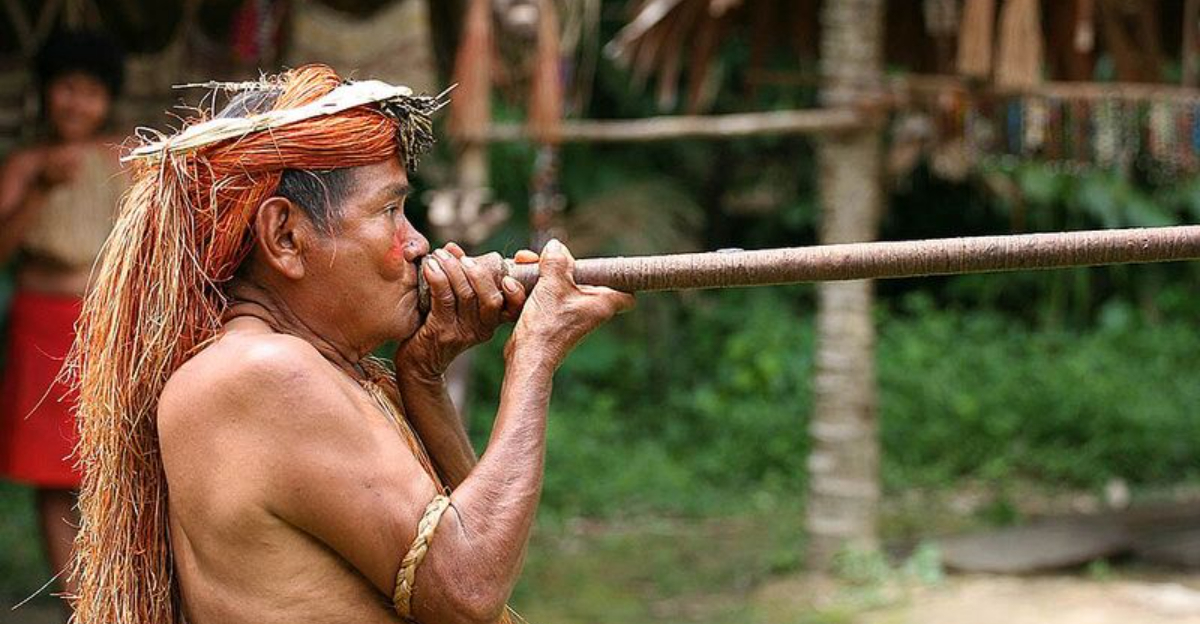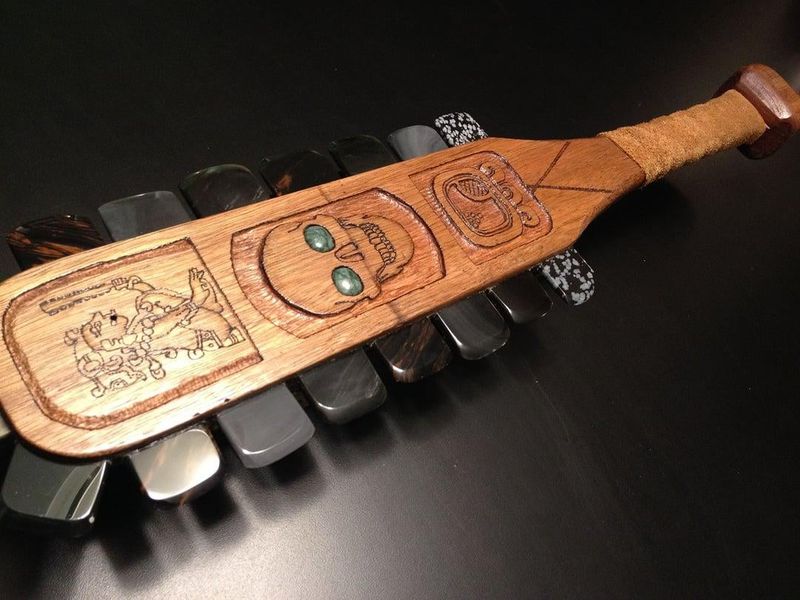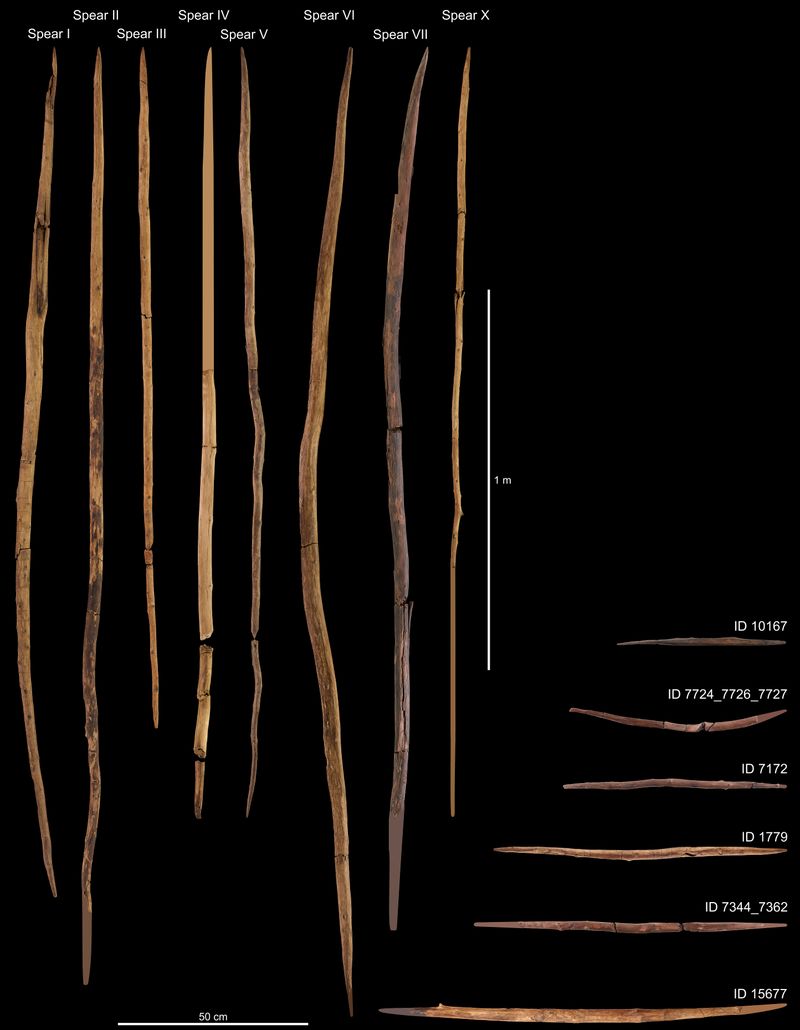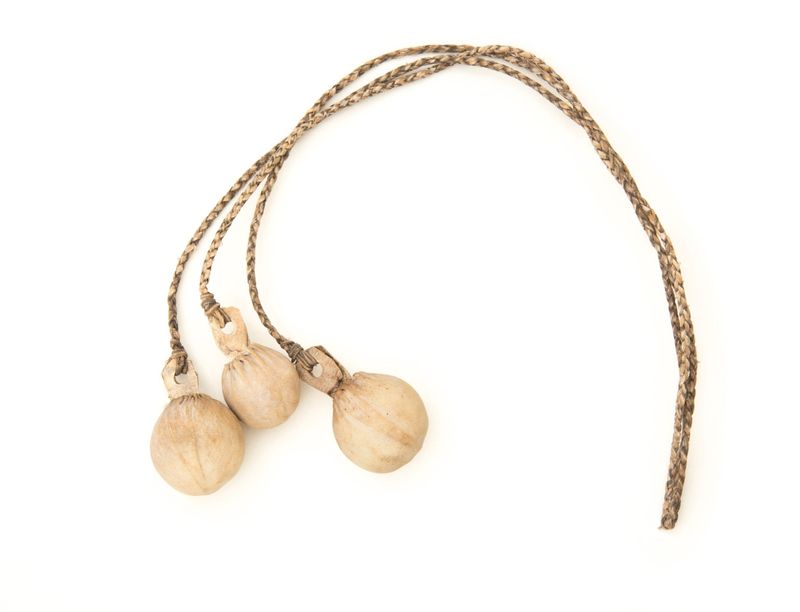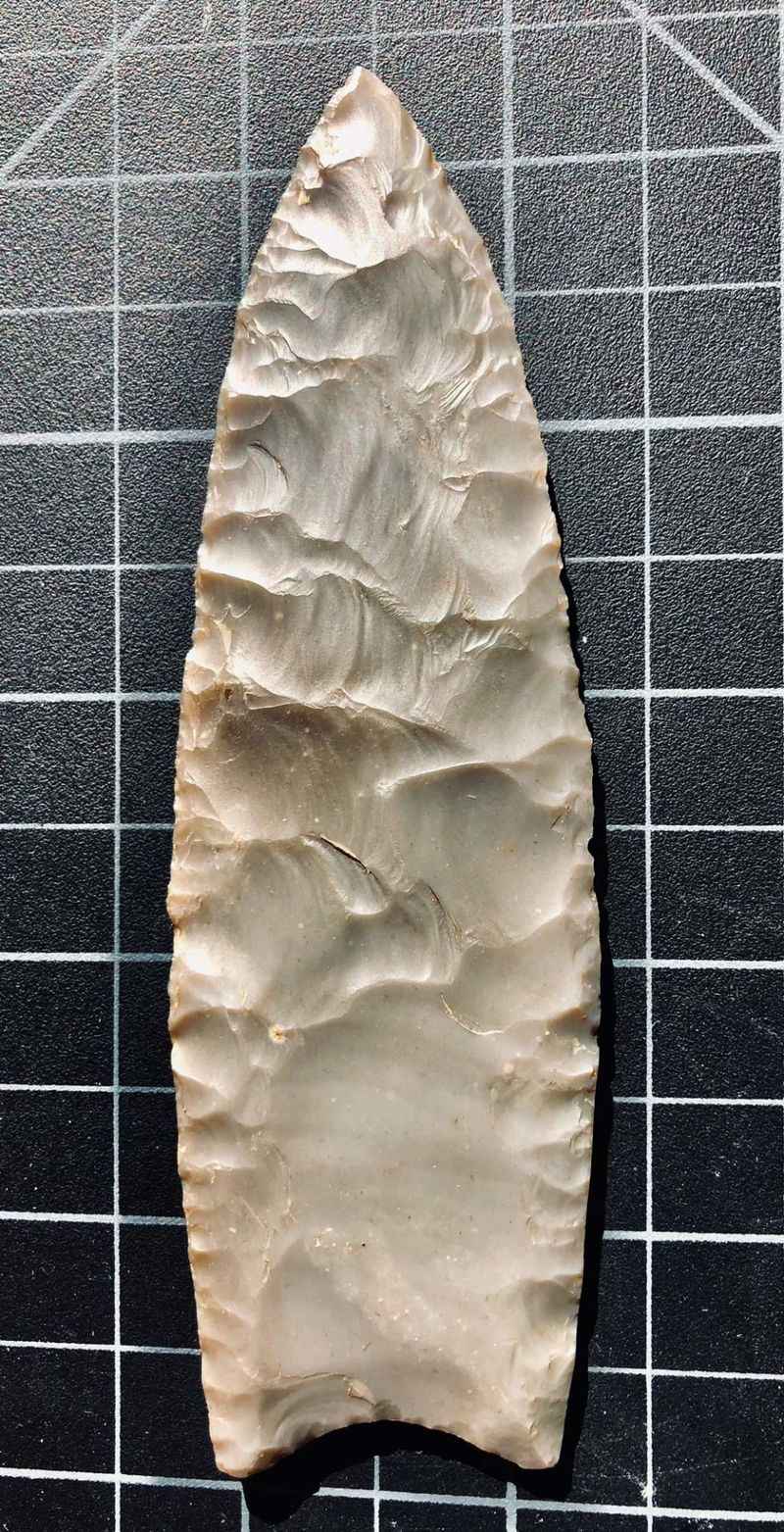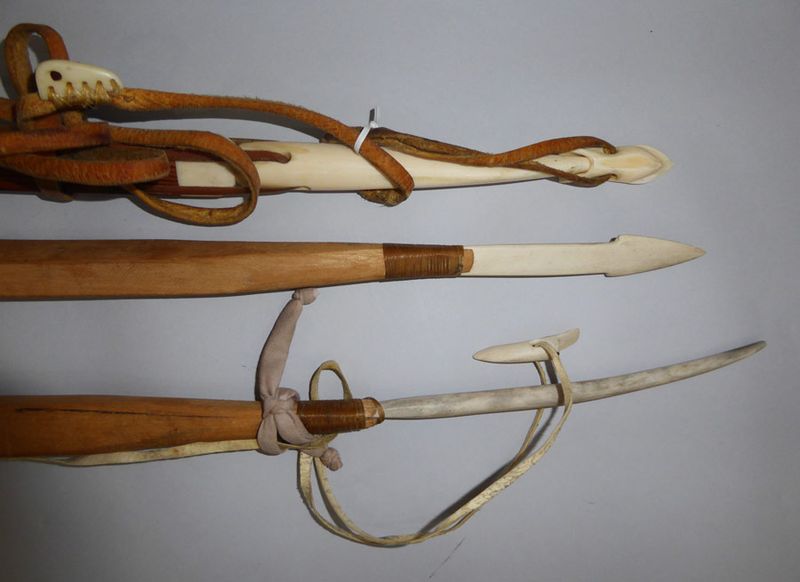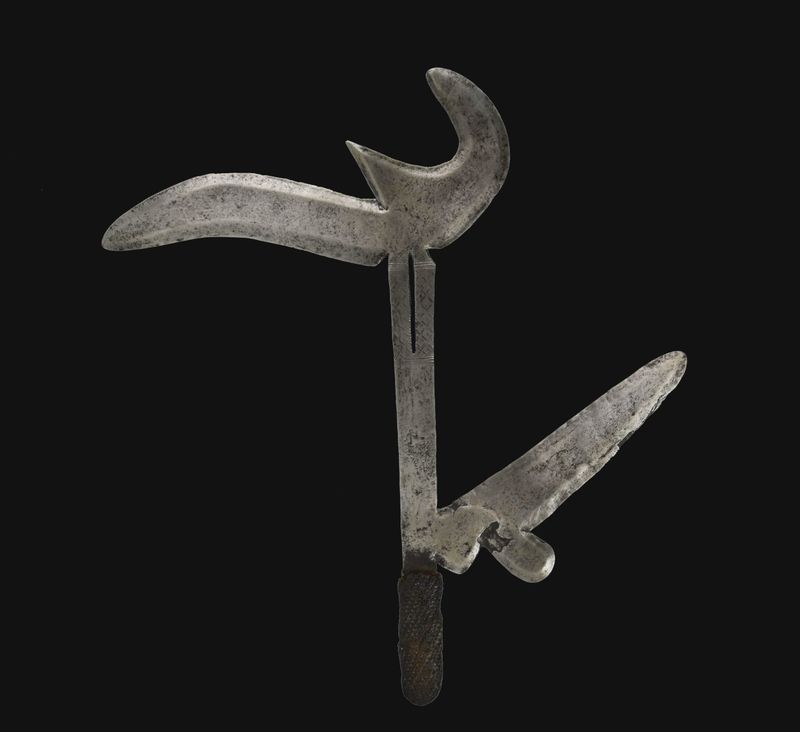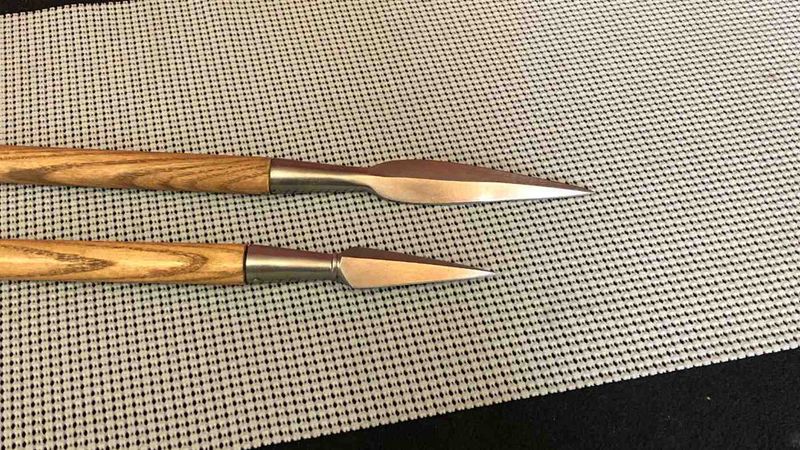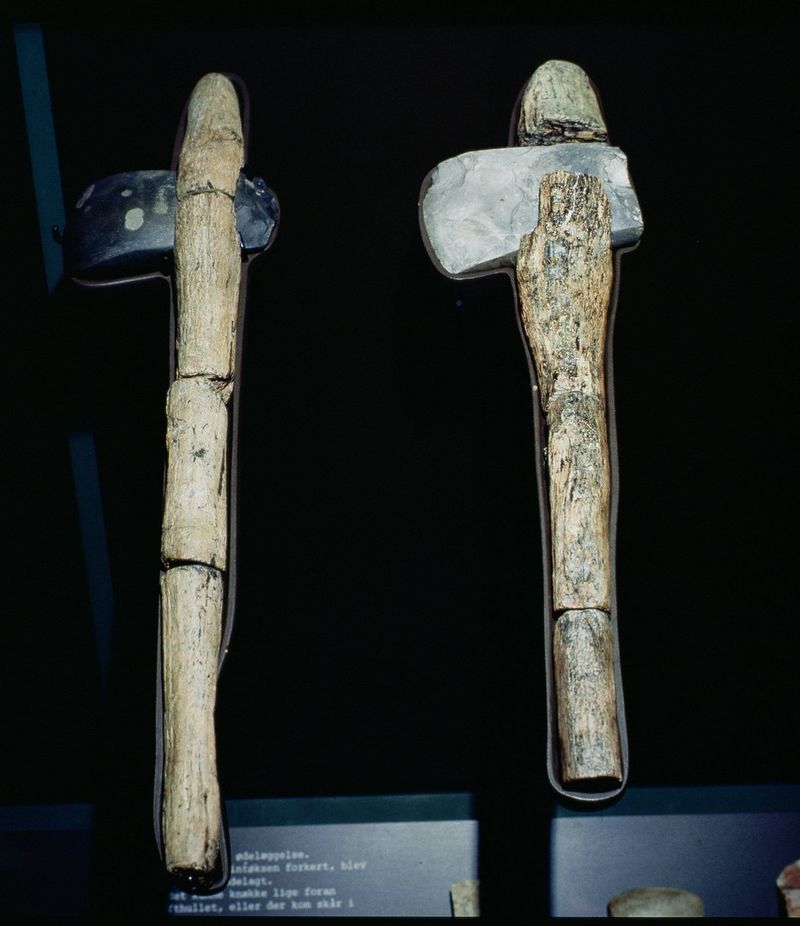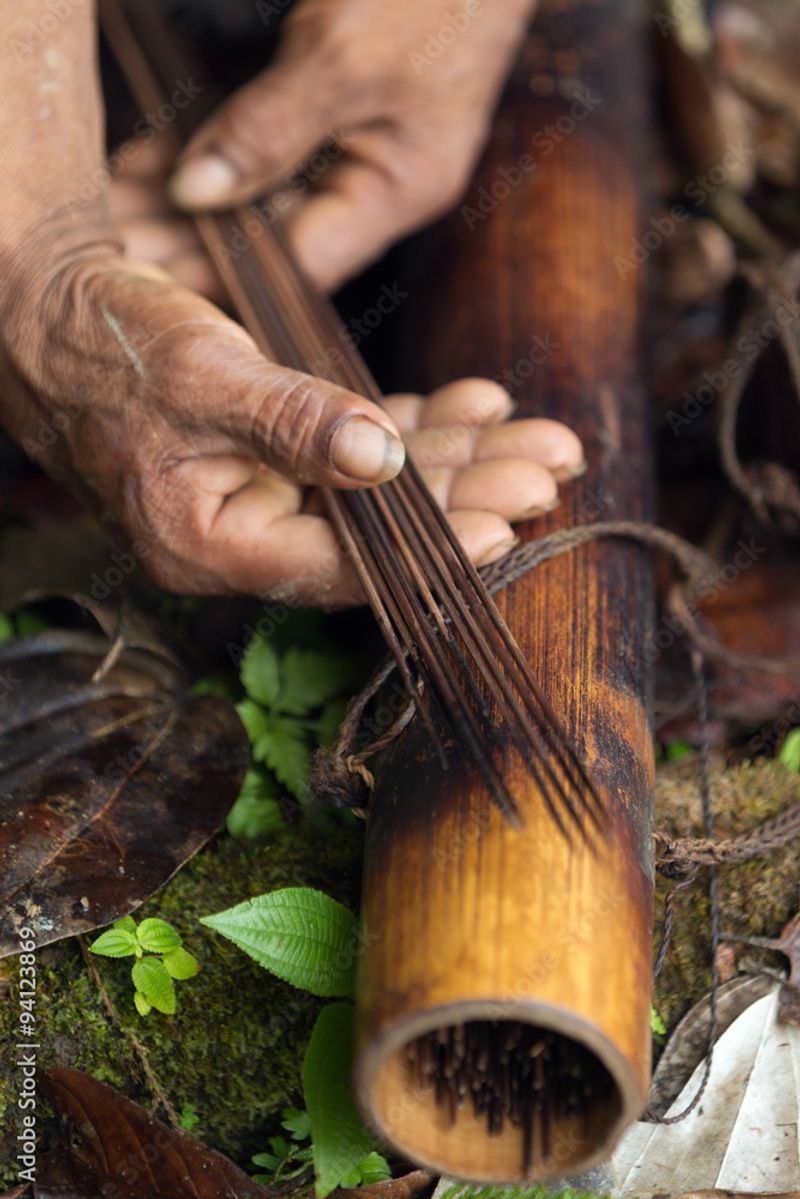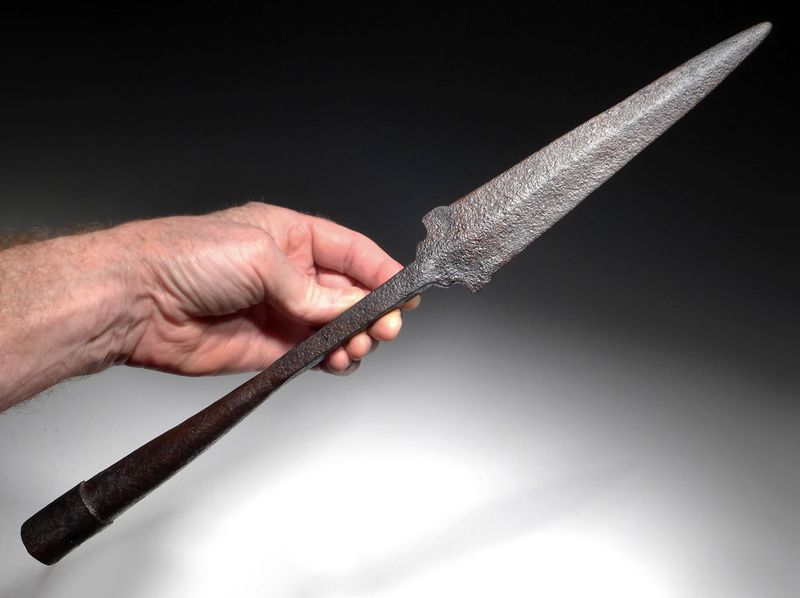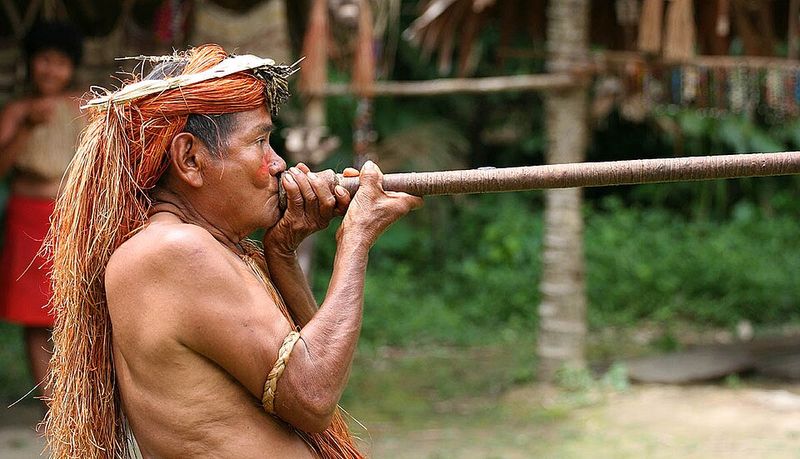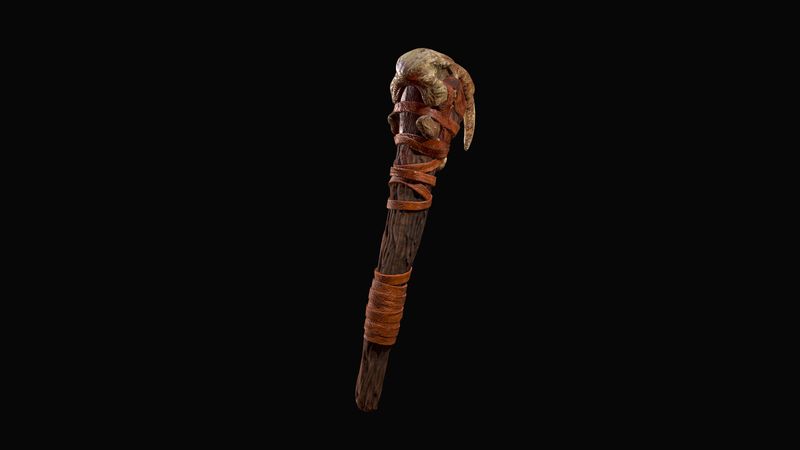Throughout history, early humans developed an array of weapons to hunt and protect themselves. These tools were not just functional but often ingeniously deadly. This compilation explores some of the most astonishing weapons used in ancient times.
1. Macuahuitl (Aztec Obsidian Sword)
The Macuahuitl, used by Aztec warriors, was such a weapon. Crafted from wood, this club was embedded with obsidian blades, sharper than steel. Its design was intended for brutal efficiency, combining the heft of a club with the cutting power of a sword. Many tales speak of its terrifying effectiveness in battle. Although it lacked metal, its lethality was unquestionable, making it a fearsome tool of war. Its unique construction reflects the ingenuity of the Aztec civilization, blending natural resources with deadly purpose.
2. Atlatl (Spear-Thrower)
In the annals of prehistoric innovation, the atlatl stands out. It was not just a spear-thrower but a game-changer. By using leverage, it allowed early humans to hurl spears with increased force and precision. This tool could pierce armor, a testament to its power. Its simplicity belied its effectiveness, transforming hunting and warfare. The atlatl enabled hunters to strike from a distance, reducing risk. This ingenious invention showcased the resourcefulness of ancient peoples, turning the tide in both hunting and combat. Its legacy endures as a symbol of human ingenuity.
3. War Sling (Lithobolos)
A mere child’s toy? Hardly. The war sling, or lithobolos, was a deadly weapon in capable hands. It could hurl sharpened projectiles with bone-cracking force. This tool required skill, but its masters could shatter skulls or penetrate armor. It was portable, silent, and effective, a combination that made it feared in battlefields. The simplicity of its design masked its potential for destruction. Warriors trained tirelessly, achieving deadly accuracy. Not merely a tool for stones, it demonstrated the power of human creativity in warfare. A testament to the innovation of early combatants.
4. Fire Hardened Spears
Before the age of metal, fire-hardened spears were the pinnacle of weaponry. Early humans discovered that charring a wooden spear in fire increased its durability and lethality. This technique transformed a simple stick into a deadly weapon capable of impaling large prey. The process was straightforward yet effective, enhancing the spear’s strength and sharpness. Fire-hardened spears were the tools of mammoth hunters, symbols of early human adaptation. This method, combining nature’s elements, showcased the ingenuity of prehistoric societies. These spears were the ancestors of modern thrusting weapons.
5. Bolas
The bolas, with its simple yet ingenious design, was a hunter’s ally. Comprised of weighted cords, it was thrown to entangle the legs of animals or enemies, rendering them immobile. This tool required precision and timing, skills honed by early humans over countless hunts. Its effectiveness lay in its simplicity, a testament to human ingenuity. In the hands of a skilled user, bolas could bring down prey with minimal effort. An ancient innovation, it reflects the resourcefulness of early hunters. Bolas remain a symbol of clever design and practical application.
6. Clovis Point Spear Tips
In a world dominated by massive Ice Age megafauna, the Clovis point spear tip was a game-changer. Crafted from fluted stone, these tips were razor-sharp and deadly. Paleo-Indians used them to hunt formidable creatures. The craftsmanship involved was meticulous, requiring skill and precision. These spear tips transformed hunting, enabling early humans to confront gigantic prey. Their design was a testament to the adaptability and innovation of ancient peoples. The Clovis point remains an iconic symbol of prehistoric ingenuity and survival, a key to understanding early human life.
7. Horn Bow (Composite Bow Ancestor)
In the realm of ancient weaponry, the horn bow stands out. A precursor to the composite bow, it combined animal horn, sinew, and wood. This unique construction allowed for remarkable power and range. Early archers found it invaluable in both hunting and warfare. Its design maximized strength and flexibility, pushing the boundaries of bow technology. This innovation enabled users to launch arrows with unprecedented force. The horn bow’s legacy is seen in the evolution of archery, marking a significant step in weapon development. It exemplifies the creativity and resourcefulness of early societies.
8. Boomerang (Not Just for Returning)
The boomerang, often seen as a simple toy, had a deadly side. Aboriginal hunters used non-returning varieties designed to maim or kill. These were larger and heavier, capable of breaking bones or taking down small game. The skill required to wield them was immense, a testament to the mastery of early users. This tool reflects the adaptability and innovation of ancient cultures. Boomerangs were not merely recreational but vital in hunting. Their design speaks to the ingenious ways humans adapted natural resources for survival. A fascinating aspect of early human ingenuity.
9. Toggling Harpoon
The toggling harpoon revolutionized hunting in icy waters. Inuit hunters used this tool to secure large prey, such as whales. Its unique design allowed the tip to rotate inside the target, preventing escape. Ingenious in its simplicity, it was a product of necessity and creativity. The toggling mechanism ensured that the harpoon remained embedded, making it a reliable hunting tool. This innovation reflects the adaptability of the Inuit, thriving in harsh environments. The toggling harpoon symbolizes the resourcefulness and ingenuity of Arctic cultures in their pursuit of survival.
10. Kpinga (African Throwing Knife)
The kpinga was no ordinary knife. Used by Central African tribes, its multiple blades made it unpredictable in flight. Warriors wielded it with precision, making it both a tool of war and a work of art. Each blade was carefully crafted, reflecting the skill of its maker. The kpinga’s design allowed it to spin, increasing its chances of striking a target. This weapon symbolizes the ingenuity and craftsmanship of African cultures. Its unique form made it a formidable tool, feared by enemies. The kpinga remains an iconic symbol of African martial prowess.
11. Fletched Javelins
With the advent of fletched javelins, early humans revolutionized hunting and warfare. By adding feathers, they increased accuracy and range. This innovation transformed a simple spear into a precision weapon. It required skill and knowledge, honed over generations. Fletched javelins allowed hunters to strike from a distance, reducing danger. This advancement highlights the ingenuity and adaptability of ancient peoples. The technique of fletching was a significant step in weapon development. It remains a testament to human creativity and the relentless pursuit of improvement in survival tools.
12. Stone Axes (Hand-Crafted Killers)
Stone axes were among the earliest tools crafted by humans. These simple yet effective weapons could crush skulls or cut through limbs. Crafted with care, each axe head was a testament to the skill of its maker. Early humans used them for hunting and as tools for survival. The design was practical and durable, reflecting the needs of prehistoric life. Stone axes are symbols of human ingenuity, showcasing the ability to adapt materials for various purposes. They remain iconic artifacts of early human technology, representing a pivotal moment in tool development.
13. Poisoned Arrows & Darts
In the diverse ecosystems of Africa, South America, and Asia, poisoned arrows and darts became a deadly innovation. Tribes used toxins from plants or animals to enhance their weaponry. This method ensured that even a grazing hit could be fatal. The knowledge of poisons required skill and understanding of nature. This approach reflects the ingenuity and adaptability of indigenous peoples. Poisoned projectiles were not just tools but strategic innovations in hunting and warfare. They symbolize the deep connection between these cultures and their environments, showcasing human creativity in survival.
14. Shark Tooth Swords (Pacific Islands)
In the Pacific Islands, warriors wielded wooden swords embedded with shark teeth. These weapons could inflict deep, jagged wounds, making them fearsome in battle. The craftsmanship involved was intricate, requiring knowledge of both woodworking and marine biology. Shark tooth swords symbolize the resourcefulness of island cultures, utilizing available materials to deadly effect. Their design was both practical and intimidating, a testament to the ingenuity of their makers. These swords remain iconic symbols of Pacific Island warfare, reflecting the creativity and adaptability of these ancient societies.
15. Firebrand Spears
In the chaos of battle, firebrand spears were a terrifying sight. Ancient warriors wrapped flammable material around spear tips, creating a dual-purpose weapon. The flames could injure enemies or scare animals, adding an element of psychological warfare. This innovation showcased the tactical creativity of early combatants. Firebrand spears were not merely weapons but tools of intimidation and chaos. Their use reflects the strategic thinking applied in ancient warfare, blending fire’s destructive power with traditional weaponry. These spears remain a symbol of the ingenuity and adaptability of early human societies.
16. Blowguns with Curare Darts
In the dense Amazonian rainforests, blowguns with curare-tipped darts were silent killers. Tribes used these to hunt silently, the poison ensuring a quick, paralyzing death. The skill required to craft and use them was immense, reflecting a deep understanding of nature. Curare, derived from plants, was a potent toxin, a testament to indigenous knowledge. Blowguns were not just weapons but tools of survival, showcasing the ingenuity and adaptability of Amazonian tribes. This method remains a fascinating aspect of ancient hunting techniques, highlighting human creativity in challenging environments.
17. Skull Clubs
In times when brute force reigned, skull clubs were the weapon of choice. Fashioned from animal or human skulls, they were brutal tools for close combat. The design was simple yet effective, relying on the natural hardness of bone. Early warriors used them to devastating effect, reflecting the harsh realities of prehistoric life. These clubs symbolize the raw, primal nature of early combat, showcasing the ingenuity of their makers. Skull clubs remain iconic artifacts, representing the strategic use of available resources in weapon development.
